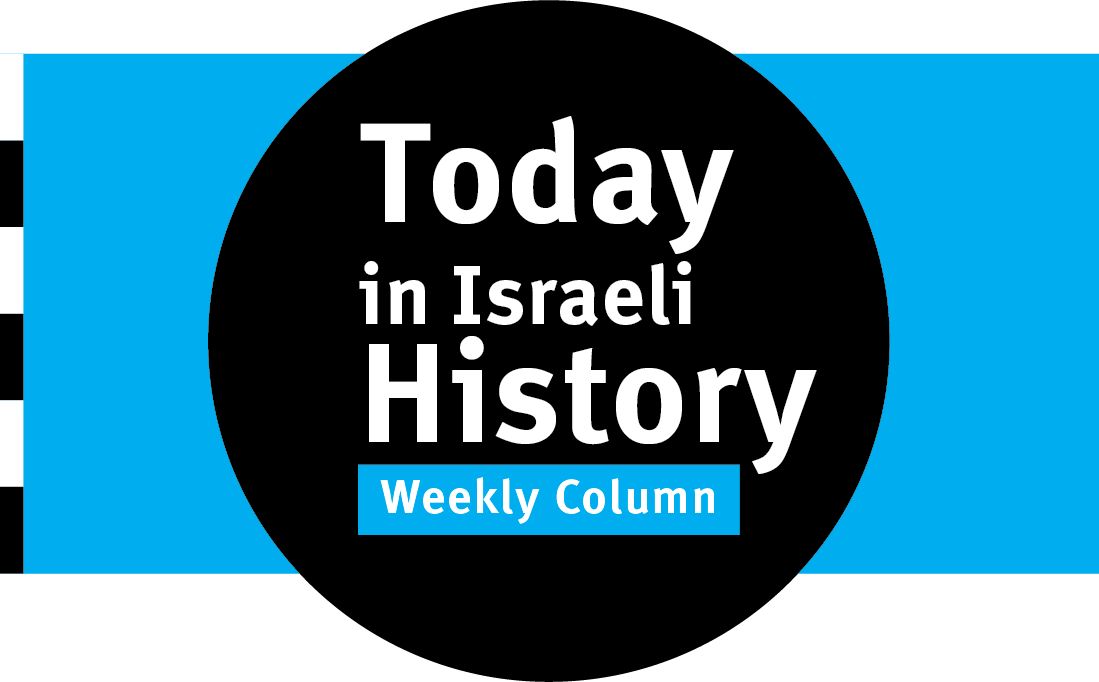April 12, 1951 — Knesset Creates Yom HaShoah

Rabbi Mordechai Nurock, a Holocaust survivor, proposed the date chosen for Yom HaShoah.
The Knesset passes a resolution establishing the 27th of Nisan as Yom HaShoah, Holocaust Memorial Day. The date, suggested by Holocaust survivor Rabbi Mordechai Nurock, was chosen because of its proximity to the start of the Warsaw Ghetto uprising. Because of a desire in Israel to focus on resistance, the commemoration originally was called Yom HaZikaron l’Shoah v’Mered HaGetaot (Holocaust and Ghetto Revolt Memorial Day).
April 13, 1948 — Hadassah Medical Convoy Is Massacred

Arab forces ambush a medical convoy bound for Hadassah Hospital on Mount Scopus in Jerusalem. The convoy, escorted by two armed Haganah vehicles, is made up of two ambulances, three buses of medical staff and three trucks. Seventy-nine are killed, mostly doctors and nurses. A British military post, only 600 feet away, fails to aid the convoy. The attack is part of the first phase of the 1948 War of Independence.
April 14, 1961 — All-Time Miss Israel Is Born

Illana Shoshan started as a beauty queen and model and became an actress, producer and activist.
Illana Shoshan, who wins the 1980 Miss Israel title and in 2010 is voted the Miss Israel of All Time, is born in Kfar Saba. After winning the 1980 pageant, she becomes an international fashion model and actress, then moves off-screen as a producer and casting director. She uses her high profile for activism, especially women’s empowerment in Israel and Los Angeles. She is a frequent speaker at conferences, including TEDxHolyLand.
April 15, 1936 — Arab Rebellion Breaks Out

A fire damages Jerusalem’s Armenian Quarter during the Arab uprising in 1936.
An Arab uprising begins when 10 cars are attacked and three Jews are killed in what appears to be a robbery near Tulkarm. The Irgun underground kills two Arabs connected to the attack the next day. Events escalate into Arab violence against Jews and the British across Palestine, and Arab workers strike for six months. The uprising leads the British to float the idea of Jewish-Arab partition in 1937 and to shift away from support for a Jewish homeland.
April 16, 1983 — Watches, Art Are Stolen From Islamic Museum

Two guards reportedly were asleep during the 1983 break-in at the Museum for Islamic Art, and the window used for the theft did not have an alarm.
In what may be the costliest heist since modern Israel’s founding, watches, clocks and paintings are stolen overnight from the poorly secured Museum for Islamic Art in Jerusalem. The loot includes 57 watches crafted by 18th century French-Swiss artisan Abraham-Louis Breguet; one of them, a timepiece made for Marie Antoinette, is valued at $30 million. The theft remains unsolved for more than 20 years.
April 17, 1948 — Rabin Leads Relief for Jerusalem

Commanded by Yitzhak Rabin, the Harel Brigade delivers a convoy of supplies to Jerusalem despite fire from Arab guerrillas. The supplies bring relief to Jewish residents who have been blockaded since February. The convoy arrives four days after an Arab ambush of a medical convoy bound for Hadassah Hospital on Mount Scopus killed 79 Jews. Arab forces regain control of the roads to Jerusalem on April 20, again cutting off the city.
April 18, 1955 — Albert Einstein Dies

National Photo Collection of Israel
Israeli Prime Minister David Ben-Gurion tried to persuade Albert Einstein to serve as Israel’s second president
Physicist Albert Einstein, who had declined an offer in 1952 to serve as Israel’s second president, dies at age 76. Einstein opposed militant forms of nationalism, but after witnessing attacks on Jews, he was drawn to Zionism after World War I. He wrote in 1921 that “Jewish nationalism must be developed both in Palestine and everywhere else.” He joined a U.S. fundraising tour for Hebrew University that year and first visited the Land of Israel in 1923.
Items are provided by the Center for Israel Education (israeled.org), where you can find more details.


